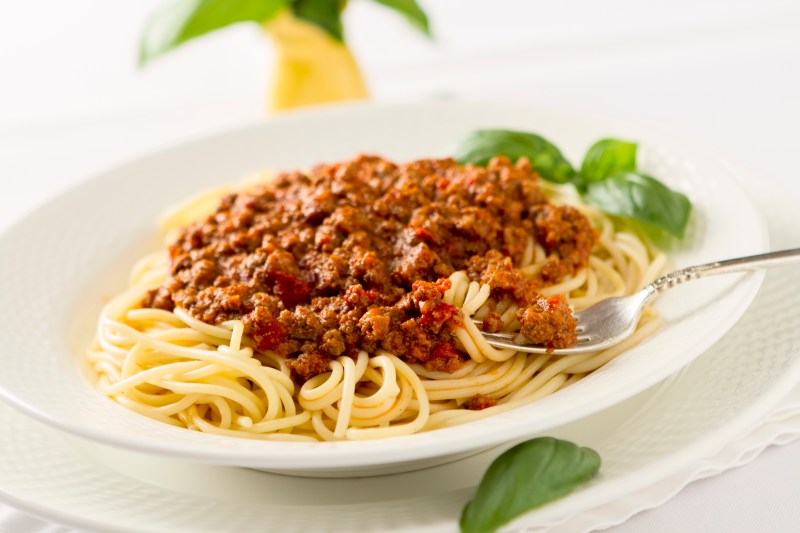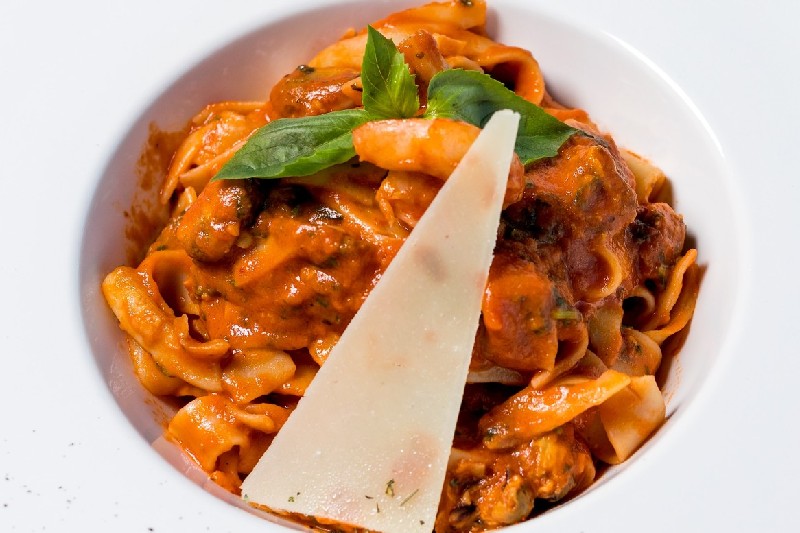
When we think of meat sauce, the first thing that likely comes to mind is a thick and delicious Italian ragú. However, there are many variations of meat sauce that incorporate many different types of meat and bases for the sauce. Some meat sauces have ground beef, while others might call for pork, lamb, or chicken. Tomatoes are a common base for meat sauces, but some recipes use cream, yogurt, or even nuts.
Although pasta is a meat sauce’s best friend, it also pairs well with rice and other grains. You can even put a meat sauce on bread. If you think about it, sloppy joes are just meat sauce in a bun. Also, chili is a meat sauce enjoyed on hot dogs, fries, and mac & cheese.
Related Guides
Many meat sauces have similar staple ingredients, with a few ingredient substitutions here and there. However, there are a few off-the-wall sauces that might not come to mind when you think of meat sauce but still are — think sausage gravy.
Since you came in search of making a meat sauce, we won’t get too unique in creating one. We’re going to show you how to make an authentic ragù alla bolognese from scratch. This is a go-to sauce that goes perfectly with almost any pasta.
Ragù Alla Bolognese

(By Anna Del Conte)
This recipe comes from BBC Food, which also has an excellent recipe app, where you can explore many different types of meat sauces. This recipe is from Anna Del Conte, a leading figure in Italian cuisine in the U.K. Her from-scratch recipe calls for tagliatelle because the noodles are wider and thicker, which gives more surface area for the sauce to stick to. However, it will also pair nicely with pappardelle, spaghetti, lasagna, or any pasta you’re trying to add to a tomato-based meat sauce. This sauce is so delicious you would probably be just as happy eating it with a spoon.
Ingredients
- 60 grams /2¼ ounces butter
- 2 tablespoons olive oil
- 1 garlic clove
- 60gram/2¼ ounces unsmoked pancetta, finely chopped
- 1 small onion, very finely chopped
- 1 carrot, very finely chopped
- 1 celery stick, very finely chopped
- 1 bay leaf
- 400 grams/14 ounces lean chuck or braising beef, coarsely minced
- 2 tablespoons tomato purée
- 150 milliliters/5 fluid ounces red wine, such as Sangiovese or Barbera
- 2 pinches grated nutmeg
- 150 milliliters/5 fluid ounces beef stock
- 150 milliliters/5 fluid ounces whole milk
- salt and freshly ground black pepper
- tagliatelle, to serve
Method
- Heat the butter and oil in a heavy-based saucepan. Add the garlic and cook for 1 minute, then remove it.
- Add the pancetta and cook for 5 minutes, stirring often.
- Add the onion and, when it begins to soften, stir in the carrot, celery, and bay leaf. Cook for 10 minutes, stirring often.
- Add the beef, turn the heat up to high and cook until medium-brown and nearly crisp, crumbling it in the pot using a fork. You need a high heat so that the meat browns rather than stews, but be careful not to let it become too brown and hard.
- Add the tomato purée and cook for 2 minutes.
- Add the wine, nutmeg, and stock. Bring to the boil, then turn the heat down to very low, so that the mixture reduces very slowly.
- Set the lid askew over the pan and cook for about 2 hours, adding a couple of tablespoons of milk from time to time.
- By the end, all the milk should have been added and absorbed, and the ragù should be rich with the texture of thick soup.
- Taste and adjust the seasoning. The ragù is now ready. Boil the tagliatelle and serve with the ragù.



